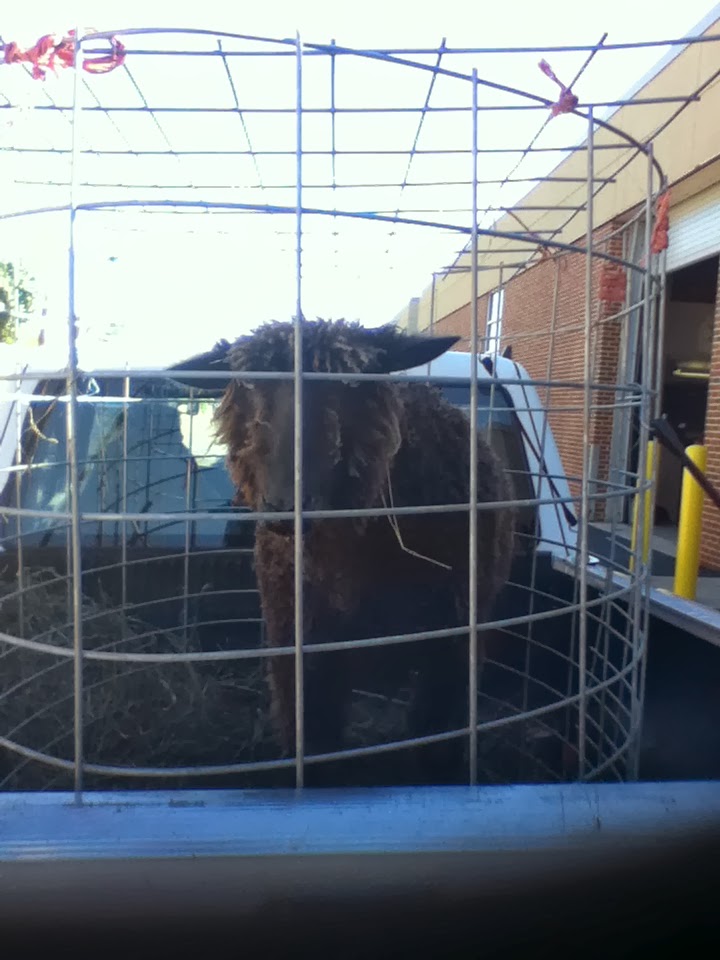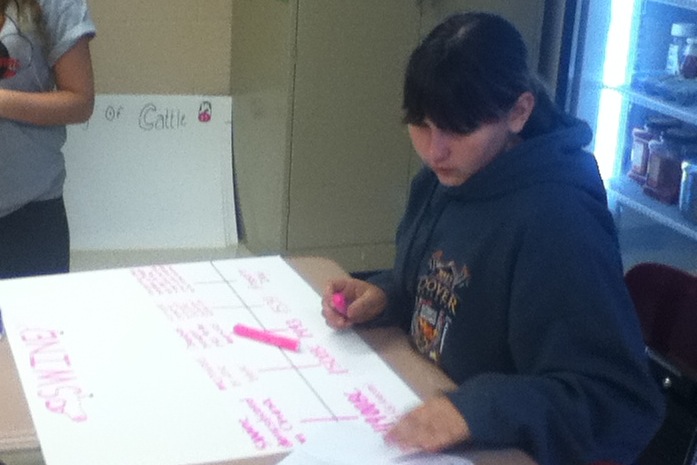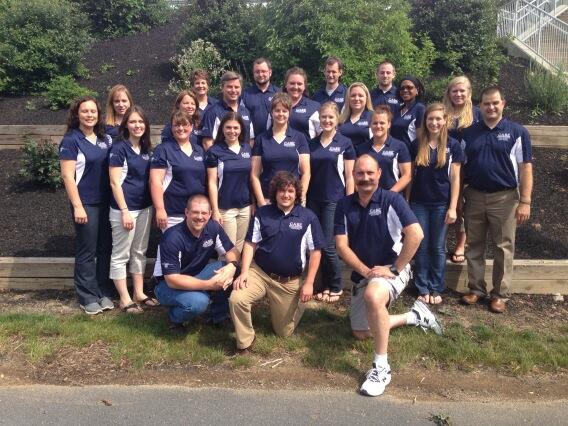It's tough to believe that September has come and gone already at CVHS! The last week of September was especially busy with 3 FFA events taking place alongside a normal teaching schedule. Let's take a look at the action!
Students enrolled in
"Introduction to Agriculture, Food, and Natural Resources" began to dive into a communications unit that taught about the importance of verbal, non-verbal, and written communication. One of the first activities done as a class was
Activity 2.2.2. Hear no Evil, Speak no Evil. Students worked together on a beautiful day to create shapes with string without seeing or talking. Groups had to create a perfect square, octagon, and 5-pointed star while being blindfolded but allowed to speak, with sight but allowed to speak, or while speaking with sight! It proved to be a challenge for these 1st-year Ag students to learn about the importance of teamwork.
 |
Students decide how to make a 5-pointed star while
being able to speak with their blindfolds removed. |
 |
Another group brainstorms how to make an octagon
with their string. Students enjoyed the challenge
of working with their peers outside the classroom. |
Another highlight of Intro to AFNR was completing
Activity 2.1.1. Communication Charades where a competition evolved between 5 competitive groups as to which group could guess the charade in the shortest time. Aditionally,
Activity 2.1.2. Speak from the Heart gave students a chance to practice their ability to emphasize words while reading from a popular children's book before each student
gave their own speech about their 3 favorite agricultural items. This unit has been a great help to prepare students for public speaking and interactions with others outside the classroom.
On Tuesday, October 1st, 9 students from CV FFA attended the
Fall Leadership Conference hosted by the PA FFA State Association and the 2014 Penn State Student Teachers. The first-year members attended FFA stations to learn about the history of FFA, conferences, and how to get more involved in the organization. Chapter Officers attended a specific workshop to learn about their duties within the chapter. After lunch, students combined together for a workshop about the Washington Leadership Conference and the true meaning of community service.
 |
WLC Workshop at the Fall Leadership Conference
exchanging community service ideas via a 'Balloon Pop.' |
 |
Group photo from 2013 Fall Leadership Conference.
Front Row: P. Smith, A. Pauletta, J. Robinson, A. Klinger.
Back Row: CV FFA Reporter A. Emig, CV FFA President L. Shatto, N. Hirsch,
CV FFA Secretary M. Yorlets, and CV FFA Sentinel S. Christie. |
The final event for the week was the
39th Annual Stockman's Contest at the Keystone International Livestock Exposition in Harrisburg, PA. CV FFA was represented by 3 teams of students in grades 10-12.
 |
Nate (Purple shirt) evaluates
4 cuts of meat during the
Meat Judging Class. |
 |
Makenzie does her best
to answer questions
about quality assurance. |
During the contest, FFA members placed classes of beef heifers, market swine, market lambs, and a meats class. In addition, they identified breeds of livestock, common equipment, and feed samples while also answering questions about quality assurance, current legislation surrounding livestock production, and health care. With nearly 400 students in attendance from several states, this contest was a great experience to learn more about the beef, sheep, and swine industries while getting a chance to walk around the KILE expo and interact with some of the most elite livestock breeders on the East Coast.
 |
CV FFA members pose after the KILE Stockman's Contest.
Front Row: C. Murlatt, K. Paulus, A. Emig, E. Goodhart.
Back Row: N. Crain, Z. Phillips, W. Williams, N. Short, and M. Yorlets. |
To follow more adventures of the Cumberland Valley Agriculture Science program and FFA chapter, please visit www.cvschools.org/Ag and www.cvschools.org/FFA. Follow the chapter on Twitter with the handle @CV_FFA.






























.JPG)
.JPG)

.JPG)











